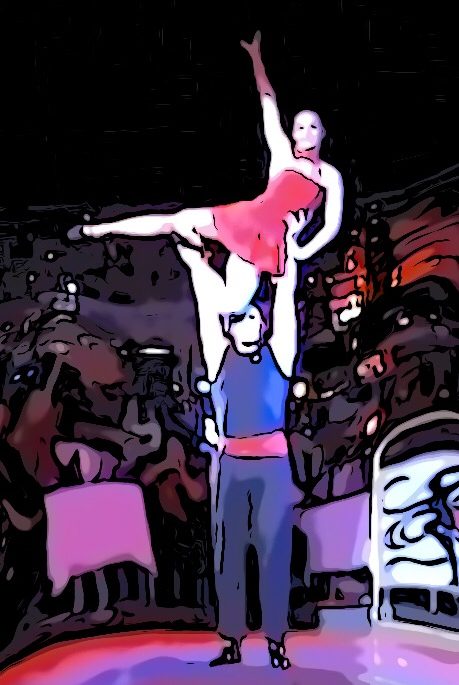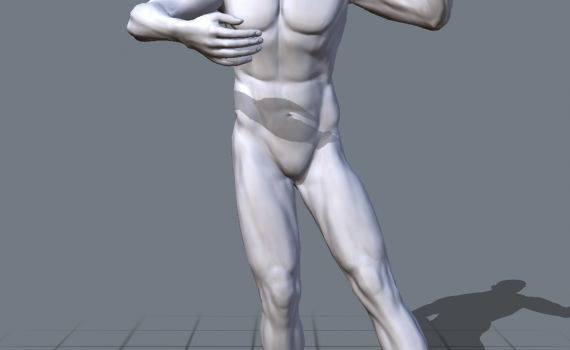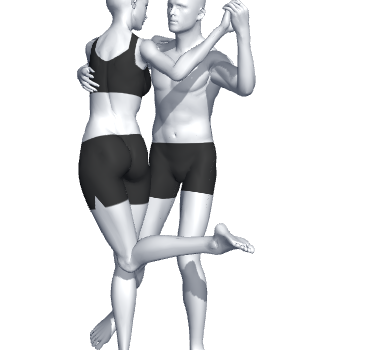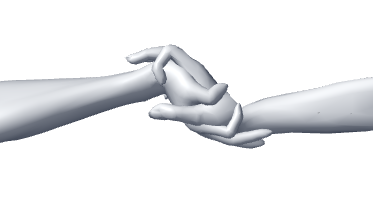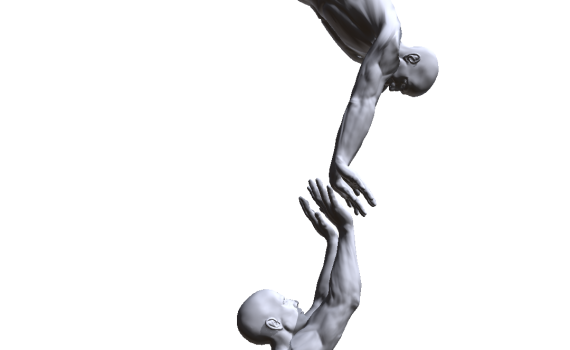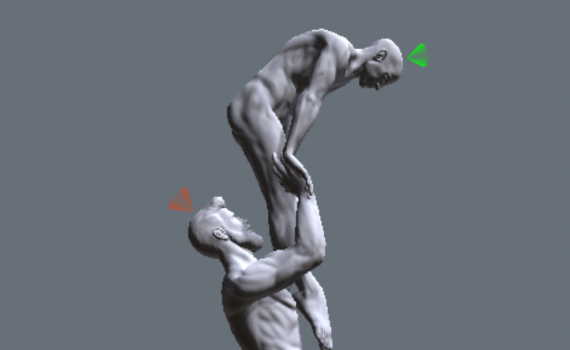The Lapiz (= pin) is a classic rond, with the peculiarity that the foot (like a compasses) keeps in contact with the ground while the knee always points forward. The Tanguer@ fondles the floor with the Lapiz. Depending on the dancers emotion, the heel, the flat foot or just the toes may be used. Whoever wants to exhaust all possibilities, should intensively deal with the Adornos (= ornaments). Movement: The Lapiz starts from the knee2knee position. Then the free leg is stretched and guided in a large semicircle around the body, and afterwards angled to end up again in the […]
Monthly archives: July 2018
The cause for a Boleo (= slingshot) is the Rebote (= rebound). The step approach will be stopped and there is a weight transfer to the previous foot. The Rebote is danced with a body counter movement (= dissociation) that starts in the shoulder and continues like a wave until the foot. The free foot moves on until the end in the original dance direction, taking off and giving the impression of a whip. In advance to the Boleo, the Ocho is danced forward or backward. After the forward ocho, the boleo will cross the legs forwards. The angular momentum […]
The Salida (= Start) is a step pattern (basic pattern) of the tango that can be adapted to any rhythm: Lady starts with left forwards, man with right backwards… one (small) step against the dance direction (2 lane) one step sideways to the middle (with change from 2 to 3 lane) a step outside of the partner in dance direction (3 lane with dissociation) a step in the dance direction (3 lane) close (with weight shift and change from 3 to 2 lane) → the lady crosses to precede (comparable to the left turned Viennese waltz) a step in the […]
In principle, I recommend the balancing on the palm! Watch your hand in the push-up position with straight arms. Try to keep your weight only on your fingers … It is possible, but unnecessarily difficult. And now watch the angle between forearm and back of the hand. Usually the possible range is between 90 ° – 270 ° DEG, but keeping a weight on the back of the hand is unnecessarily difficult too. I have met people who could move their wrist until the touch with the forearm on both sides. In the partner balance, only the range of 100 […]
The Courbet (Flac) is a trick from the category for experts. This trick starts for the flyer in the handstand and ends when standing in the hands. If the trick is caught on straight arms, it’s a trick for professionals, as you rarely see it in the circus. In principle, the Courbet is the second part of the flicflac, which is why this trick is more and more often called flac. Strictly speaking, the Courbet is only a section of the flac, namely the active leg pull just before standing. Unlike the flac, the flyer for the Courbet (in the partner […]
The Posechka is a trick from the category for experts. Where the term Posechka comes from is probably a myth. The best tip seems to be, that some Eastern European brought this trick to Germany about 30-40 years ago and called it “Posetschka”. Google only offers a Bulgarian translation, which tells us that Posechka means “sober”. Posetschka is not known by Google and Posedchka means saddle, which also does not make more sense!? In German, I prefer to use the term “reel-up”, which at least meaningful describes the type of movement to the handstand. Nevertheless, there are many acrobats who […]
